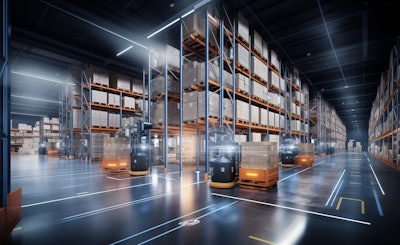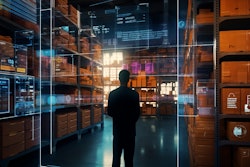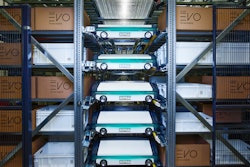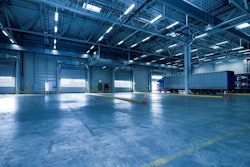
Emerging technologies are reshaping the future of supply chain. It’s these disruptive technologies that are altering the way organizations do business. They’re creating alternative means of connecting data, providing visibility, enforcing safety and more.
Food Logistics talks exclusively with Juan Meisel, CEO and co-founder of Grip, about how emerging technologies help companies close the information loop between data and decision making.
CLICK HERE to read the article in full.
Food Logistics: Emerging technologies are on the rise, everything from AI and IoT to cloud-based, digital transformation and future-proofing the supply chain. What do you think is attributing to the growth in adoption of emerging technologies?
Juan Meisel: Results. It’s hard to go against results and emerging technologies like AI, IoT and cloud have, over time, shown clear gains in efficiencies and productivity. In our case, we’re leveraging millions of different data points to help our clients understand the most effective ways to ship a package while also reducing shipping costs and failure rates. The decision-making process behind how a package is sent has been largely unchanged for decades, and with so much technology and data available to us, that really shouldn’t be the case. Emerging technologies help companies like us and our clients close the information loop between data and decision making.
Food Logistics: What kinds of emerging technologies has your company introduced within the last 12 months? Anything on the horizon that will be introduced soon?
Meisel: We’ve recently launched a first-of-its-kind order management system specifically focused on perishable DTC, which includes frozen and refrigerated goods. It’s powered by our shipping engine which uses AI to always decide what’s the best way to send a box of frozen or refrigerated goods from Point A to Point B. This technology was inspired by my time as head of logistics for frozen meat delivery subscription ButcherBox. I saw how we were spending millions of dollars a year trying to customize and run software for our logistics operation. I realized there was a huge gap in the market for software tailored to the unique challenges of shipping perishable products nationwide. Our logistics engine analyzes factors such as temperature, major weather events, and carrier performance to provide package-by-package shipping recommendations. This level of insight was previously unattainable for most DTC brands due to resource constraints. We’ve also introduced large language models (LLMs) for internal and external data querying that allows us to service our clients better. You can essentially ask our OMS very complex data or logistics questions in natural language that allows us and our clients to understand our businesses better.
Food Logistics: What advice do you have for those companies who haven’t implemented any form of emerging tech whatsoever or are just starting the journey? Where/how should they start?
Meisel: Start small and take one step at a time. Companies often get overwhelmed and delay projects because they think that a full overhaul of systems is needed to start using some of the technology, but there’s always low hanging fruit and tests that can be performed that can bring significant improvements. There’s also the question for startups of “build vs buy” when it comes to software development. If you’re in the business of selling frozen pet food or ready-to-eat meals online, there is no point in spending precious funding or revenue on trying to build logistics software or tech. Outsource that to someone you know will have a better solution and instead focus on product development and increasing the value of your brand.
Food Logistics: How can companies decipher which kinds of emerging technologies are best for their supply chain?
Meisel: Companies first need to qualify which technologies would allow them to make more informed decisions at a faster rate. That is what drives exponential improvements in service offerings for customers. Our fulfillment service and logistics engine is designed to help companies scale, reduce costs, increase customer retention, and offload parts of their business that don’t create brand equity.
Food Logistics: What are some things not addressed above that may be pertinent to our cold food chain readers?
Meisel: Emerging technologies accelerate innovation because it allows companies to move faster with more data. It increases the accuracy rate of decision making which allows the industry to reduce waste and service customers better. I encourage readers to be open to testing any technology that increases access to information (data) and improves speed and accuracy rate of decision making.
CLICK HERE to read the article in full.





















